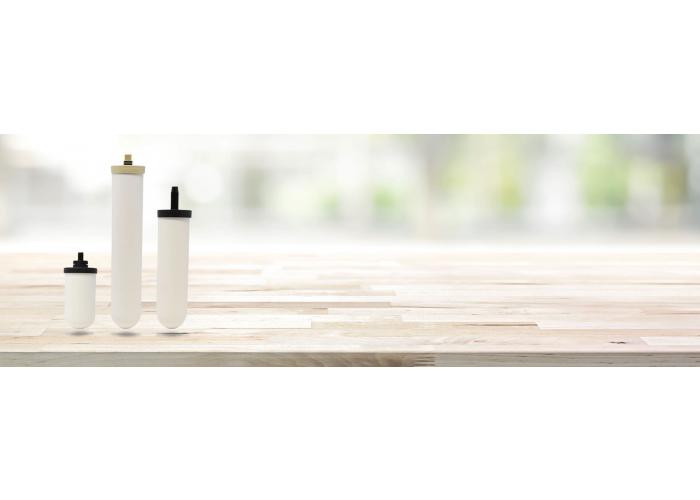
There is more than one approach to water filtration understanding the difference can help you to choose a filter that is right for you. Doulton water filters use ceramic technology to improve the quality of drinking water while some other systems often use reverse osmosis, but what is the difference?
How does a ceramic water filter work?
Doulton use ceramic technology to filter contaminants from drinking water. Made from natural earths the filters are engineered into layers to provide highly effective filtration through tiny micro-pores that are less than one micron in size. This effectively works in the same way that rocks cleanse water in nature as the water flows through the porous surface thousands of micro-pores trap unwanted particles to leave clean water.
Silver is also embedded into the ceramic shell of Doulton water filters to inhibit bacterial growth. Each filter then features an activated carbon core, made from coconut shell, which removes chlorine from the water.
Furthermore, an ion exchange resin is incorporated into some Doulton water filters that remove heavy metal ions from drinking water, including lead. This process also helps to soften water.
Doulton ceramic filters:
- Achieve absolute filtration, removing 99.99%+ of common contaminants.
- Retain healthy, naturally occurring minerals in the water
- Generate no wastewater
- Deliver a great taste through disinfectant removal
- Offer a tailored range of filters to target particular concerns
- Are long-lasting
How does a reverse osmosis water filter work?
Reverse osmosis removes impurities from drinking water by pushing water through a semi-permeable membrane that traps particles and removes them from the water. Molecules larger than water will be rejected through the process to remove contaminants from drinking water.
The downside to reverse osmosis:
Reverse Osmosis is a highly effective method of water filtration, however, the catch-all approach to filtration does mean that 'good minerals, as well as 'bad', get removed from drinking water. This includes magnesium and calcium, which are important to health. The result is what can be referred to as˜˜`empty water' which also leaves the water with a slightly acidic PH.
Another drawback to reverse osmosis water filtration is the length of time it takes to process as it relies on pressure to push the water through a membrane. This can result in a long wait for freshwater.
The nature of the process means that reverse osmosis water filtration generates a relatively large amount of wastewater as much as double the amount of clean drinking water received.
The wider picture
While ceramic water filters and reverse osmosis both achieve exceptional levels of water filtration for reliable, cost-effective clean water it is worth considering the wider picture.../p>
- Natural ceramic filters allow healthy minerals to remain while these are lost in the reverse osmosis process leaving empty water.
- Homeowners with a water meter should be wary of the waste associated with a reverse osmosis system, which can again be affected by water pressure.
- If you want fresh drinking water on tap, without having to wait, a ceramic filter is an excellent choice.
- Not all water filters are the same, a Doulton water filter delivers absolute filtration, on tap, with no waste and it will retain the healthy minerals in drinking water.
